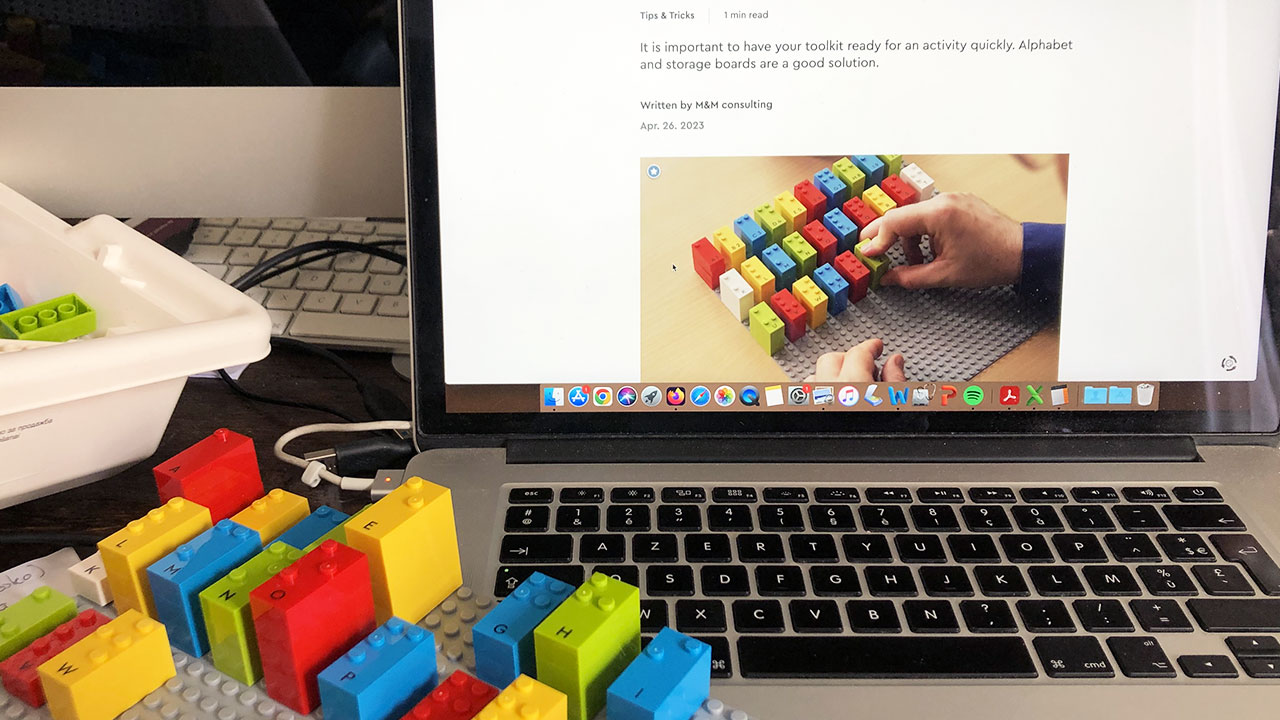What is BRAILLE?
Braille is a writing system that can be read with the fingers. Everyone knows that. But how exactly does it work? How is the code invented by the brilliant Louis Braille organised, and how do children learn it?
Written by M&M Braille
Nov. 12. 2023

Braille is a tactile code that transcribes the alphabet in the form of constellations of raised dots. It can be read with the fingers, giving blind or partially-sighted people access to reading and writing.
Each letter of the alphabet is represented by a constellation of raised dots. Braille is not a language, and knowing braille does not give you the ability to read all languages.
For example, to write 'hello', you need the five braille characters that correspond to each letter. To write 'hola' in Spanish, you will need the four braille characters corresponding to the four letters of the word.

The braille cell
The braille code is based on cells. A standard braille cell consists of 6 dots arranged in 2 columns of 3 dots. Each braille letter or symbol is a combination of 1 to 6 dots.
The 64 possible combinations make it possible to write all the letters of the alphabet, accented letters, punctuation marks, mathematical signs and musical notation.
The dots in the left column are numbered 1 to 3 from top to bottom, and 4 to 6 for the right column.
Students usually learn Braille by memorising combinations of dots.
- Dots 1 and 2 ?
- B !
- Dots 2, 3, 4 ?
- S !
Dots 1 and 5 ?
- E !

LEGO Braille Bricks are based on the classic 4 x 2 brick, but they use only 6 dots. A blank area is left to orientate the brick in the reading position.
The characters are also printed in black on this area. This means that sighted and blind children can learn and play together. (The term "in black", as opposed to braille, is used to refer to the normal print used by sighted people).

The Braille alphabet
LEGO Braille Bricks are in standard braille, also known as Grade 1 or uncontracted braille. It includes the 26 letters of the alphabet and punctuation marks.
Grade 1 is the braille used by children and beginners.
But advanced braille learners can use LEGO Braille Bricks for more complex exercises in maths, computing, vocabulary or even an introduction to music.
The structure of the braille alphabet
The braille alphabet largely follows alphabetical order. It is based on a logical structure with 4 series of 10 letters. A fifth series is used for punctuation.
First set
The first 10 letters (A to J) are made up of combinations using the 4 dots at the top of the cell. The first set forms the basis for all the other letters.
Second set
Simply add dot 3 to the first series to form the letters K to T. In this way, the letter B (dots 1, 2) becomes the letter l (dots 1, 2, 3).
Third set
By adding dot 6 to the second series, we form the letters U, V, X, Y and Z. So the letter V has the points 1, 2 and 3 of the letter l, plus dot 6.
Only the letter W (dots 2, 4, 5, 6) escapes this rule. When Louis Braille invented the code in France, the letter W was rarely used. So it was added elsewhere in the alphabet.

Is knowing all this useful for learning braille?
Yes, especially for teaching braille. Explaining how letters are formed by series is interesting for sighted people. It makes it possible to recognise letters more quickly without necessarily having to learn them. All you have to do is identify which dots are present in the upper square and then move vertically to the correct row according to which dots 3 or 6 are added. This method cannot be used for tactile learning. Letters are taught according to how difficult they are to recognise by touch.
The different types of braille
Integral or grade 1 braille is when all black letters are reproduced in braille. To reduce the number of characters and speed up reading and writing, there is contracted or grade 2 braille, used by experienced braille readers.
Contracted braille adds special signs to integral braille like:
a single symbol for a word ("go", "can", "do")
2, 3 or 4 symbols for one word ("people", "name", "afternoon")
symbol(s) for a contraction of final letter ("ness", "full")
Contracted braille is national and its use is governed by a specific code.
How to read
Braille is read from left to right with the index fingers of both hands. The two index fingers move along the line. In the middle of the line, the right hand continues reading while the left hand moves in the opposite direction to the beginning of the next line.
This two-handed reading speeds up reading. However, even for a good braille reader, reading braille is slower than for a sighted person and requires a great deal of concentration. It's also impossible for a braille reader to read diagonally.
Braille is an invention that has changed the lives of blind people by giving them access to education. But it takes time to learn and teaching materials are scarce. The LEGO Braille Bricks concept allows children to have fun learning braille and to learn to read at the same time as sighted students.

















